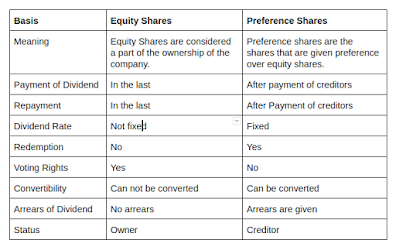It is common for shareholders in small & private companies to often dilute or transfer their equity stake to another person. This usually happens when either the stakeholder is ill or he wants to transfer shares to a family member. This is when the transfer of shares takes place.
The Companies Act, 2013 specifies a proper procedure for the transfer of shares. It also prohibits any company to Register and Share Transfer Agent of its shares without the execution of the proper instrument and unless the requisite stamp duty is paid and details of the Transferee & Transferor are provided.
Here you can read about the detailed process along with compliance for the transfer of shares for private companies.
How Transfer of Share Works
To start with the transfer of shares, the respective party must first acquire the form SH-4 for Share Transfer Deed. The details of time, date, no. of shares, name of transferor & transferee, amount of consideration, address, occupation, distinctive no. of shares, etc. must be furnished in the form. The Share Transfer Deed or Instrument is then executed and stamped properly.
In the next step, both the share transferor and transferee are required to prepare their respective sale/purchase invoices and submit the same along with their share transfer application to the Board of Directors of the company.
The Board of Directors will then conduct a board meeting to decide on and approve/reject the registration of transfer of shares. If approved, requisite entries in registers and certificates will be made to complete the transfer.
Time Frame for Execution & Delivery of Share Transfer Instrument to Company
Section 59 of the Companies Act, 2013 specifies the time limit for the execution and delivery of the Share Transfer Instrument, along with share certificates for transfer, to the company as a period of 60 days from the date of execution. In short, the Deed must be submitted to the company within 60 days from the date it was executed.
What to do If The Instrument of Transfer is Lost Post-execution and Before Delivery to The Company?
In the case when the Instrument of transfer is lost after execution or could not be submitted to the company within 60 days, Section 56 of the Companies Act allows the company to register the transfer of shares on the grounds of indemnity on such terms as the board finds suitable.
However, if the instrument of transfer is not submitted to the Company because of the death of Subscriber, the company board is required to register the transfer and must transmit the said shares to the legal heir or nominee of the subscriber.
Read also: Do You Really Know About Difference Between Share Transmission & Share Transfer?
Stamp Duty Fee on Transfer of Shares
The stamp duty fee for the transfer of shares is fixed at 0.25% of the total consideration amount. The applicant must purchase the court fee stamp of the said amount and paste the same on his/her application. The fee is fixed irrespective of the state of the applicant/company.
Transfer of Partly Paid-up Shares
In case if a person wishes to transfer partly paid-up shares, the transferor himself/herself has to furnish an application with the company. The company will then send a notice to the transferee for acquiring a ‘No Objection Certificate’ to complete the transfer.
If the transferee sends his/her reply within 2 weeks of receipt of the notice and shows no objection to the transfer of shares, only then the company can process the application and approve the transfer.
Step-by-step Procedure for Transfer of Shares in Depository System
Here’s the procedure to request for transfer of shares by depository:
- The transferor has to make a request and provide delivery instructions to the Depository Participant No. 1 (DP1) to transfer the shares as well as debit the transferor account against the shares from clearing member 1 pool account with DP1. Upon receiving this request, the clearing member-1 pool sends a receipt instruction to DP1, instructing it to accept the Share Transfer Agent in his/her account. Finally, the securities are transferred from the transferor account to the clearing member 1 pool account with DP1.
- The clearing member 1 then instructs the Clearing Corporation (CC) to debit his Clearing Member 1 Pool account and credit the securities to his Clearing Member 1 Delivery account. The transfer of securities will take on the date of execution as mentioned in the instruction.
- Until the settlement, the securities remain in the clearing member 1 delivery account. On the settlement day, the securities in the clearing member 1 delivery account are automatically transferred to the Clearing Corporation account.
- Now, the securities automatically transfer from the Clearing Corporation account to the Clearing member 2 receipt account with DP2, with no instruction required to be set up.
- After that, the securities are transferred from the receipt account of Clearing Member 2 to his/her pool account.
- Clearing Member 2 then instructs Delivery Partner 2 to debit his pool account and credit the securities to the buying client account maintained with DP 2. The buyer at the same time gives a receipt instruction to DP 2 to accept securities in his account.
- The securities are then transferred from the clearing member 2 pool account to the buyer’s account maintained with DP 2.
Note: No stamp duty is levied in case of transfer of shares in DEMAT form.




